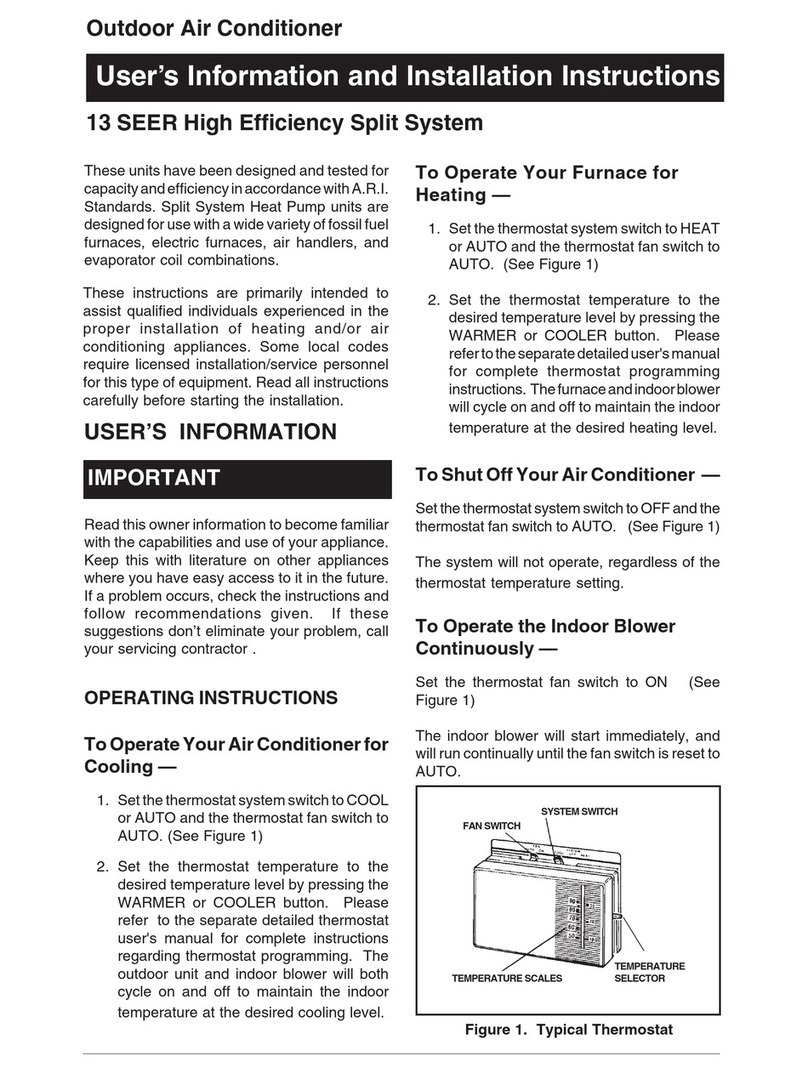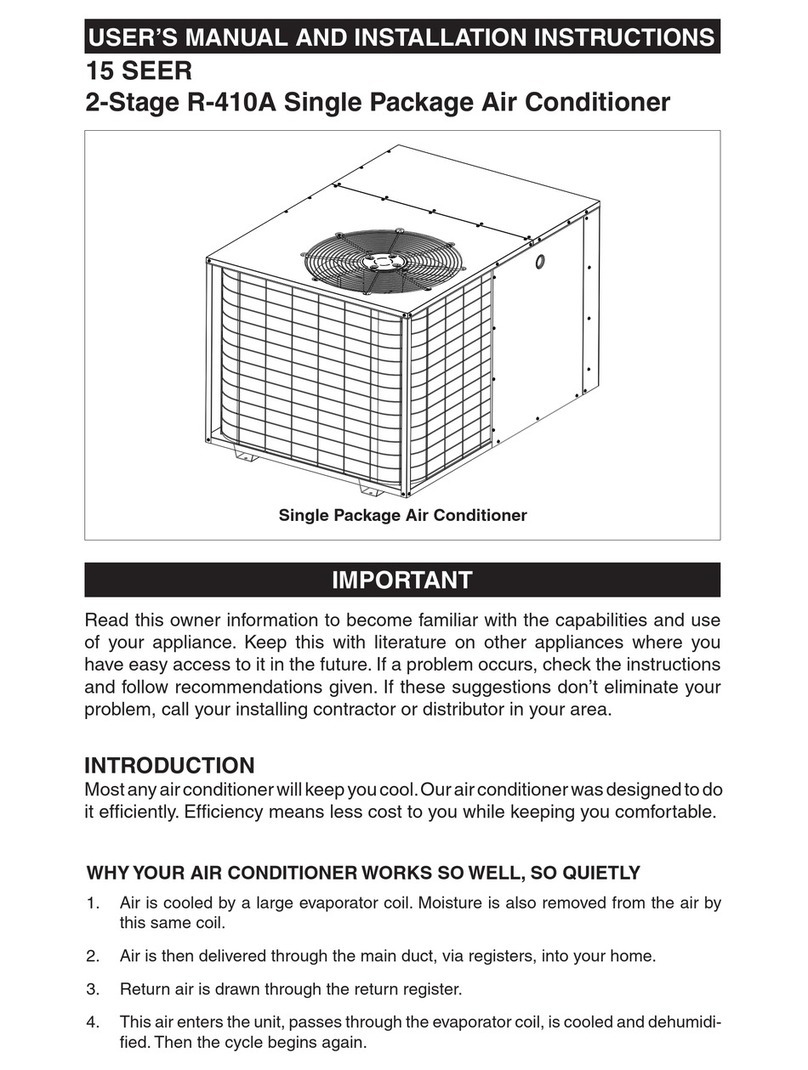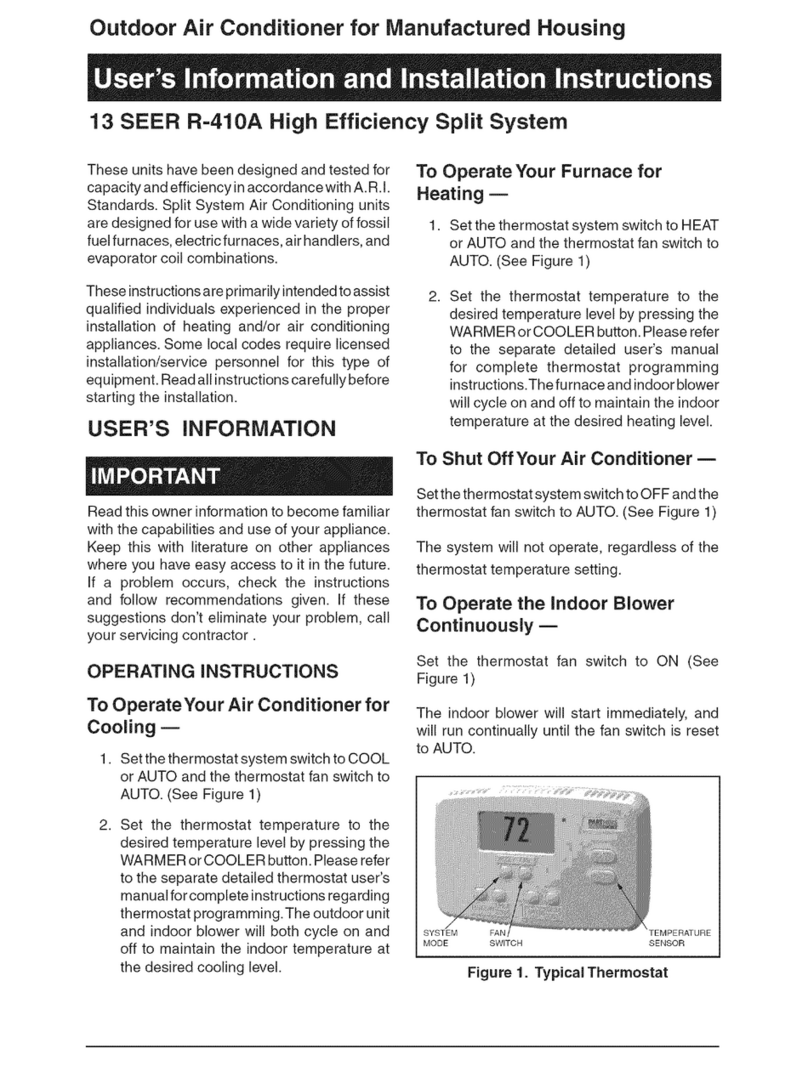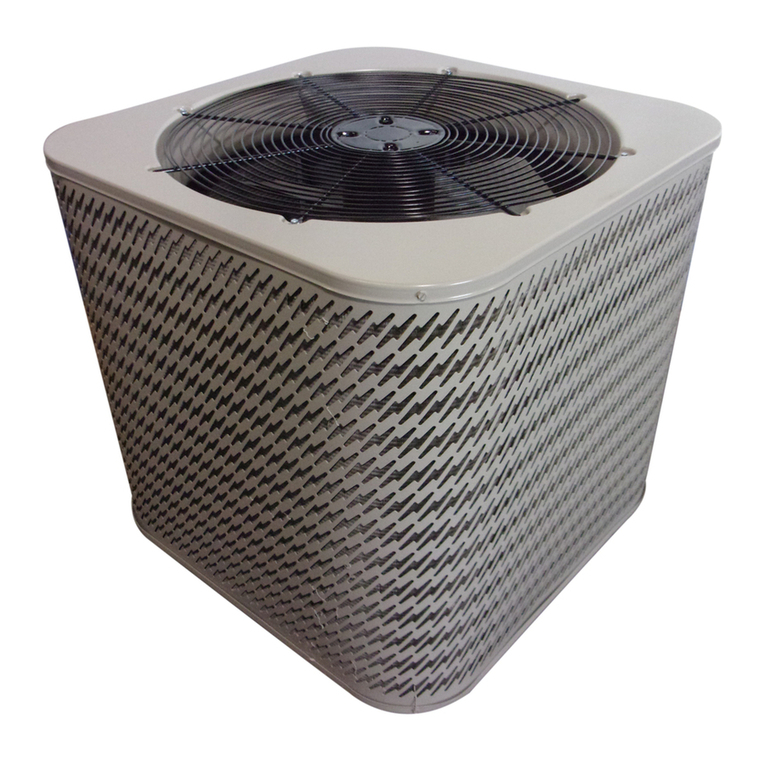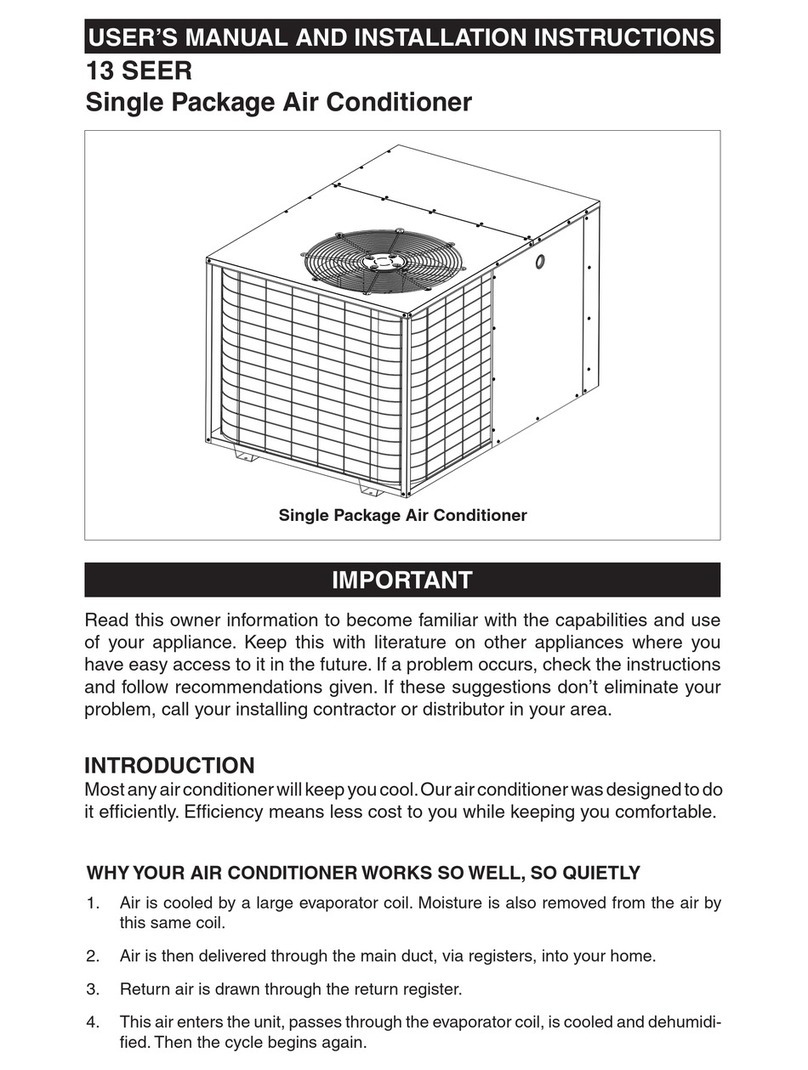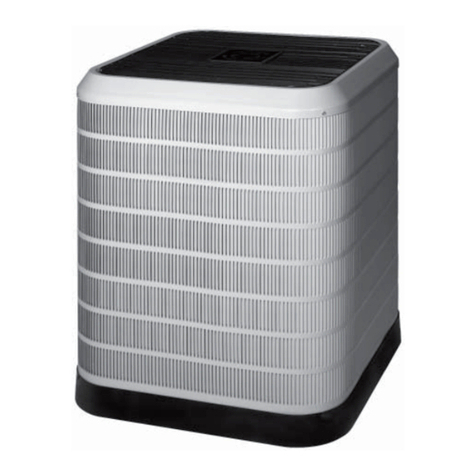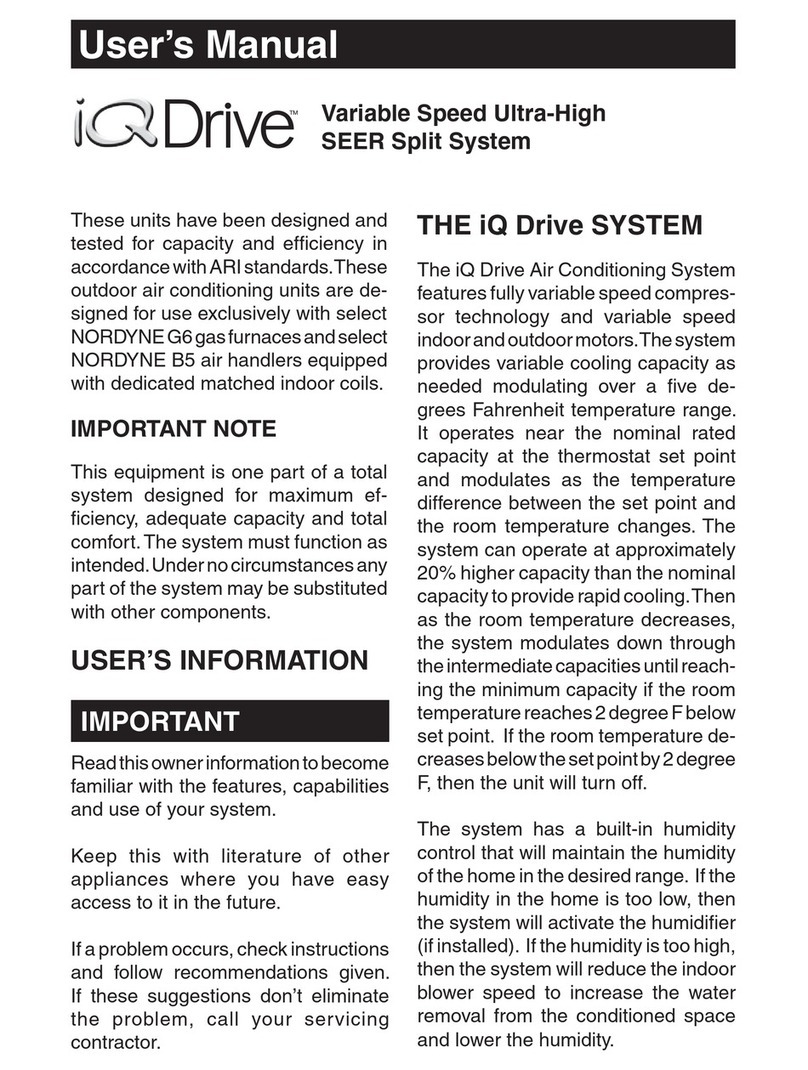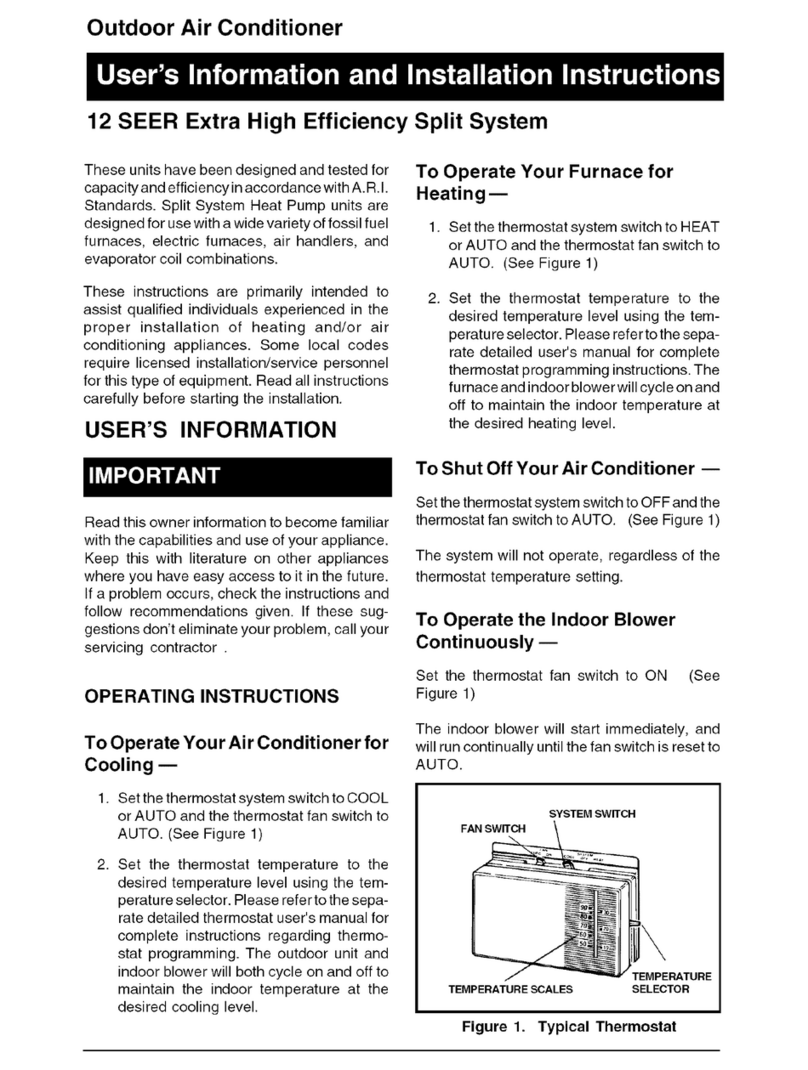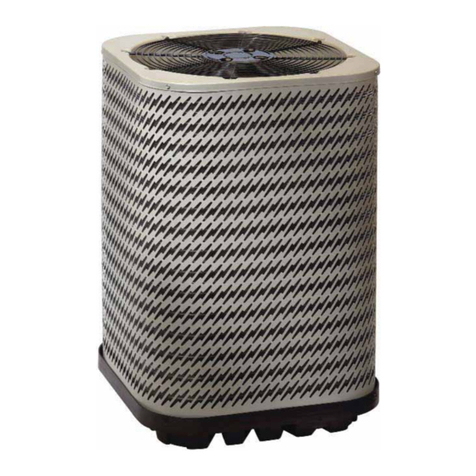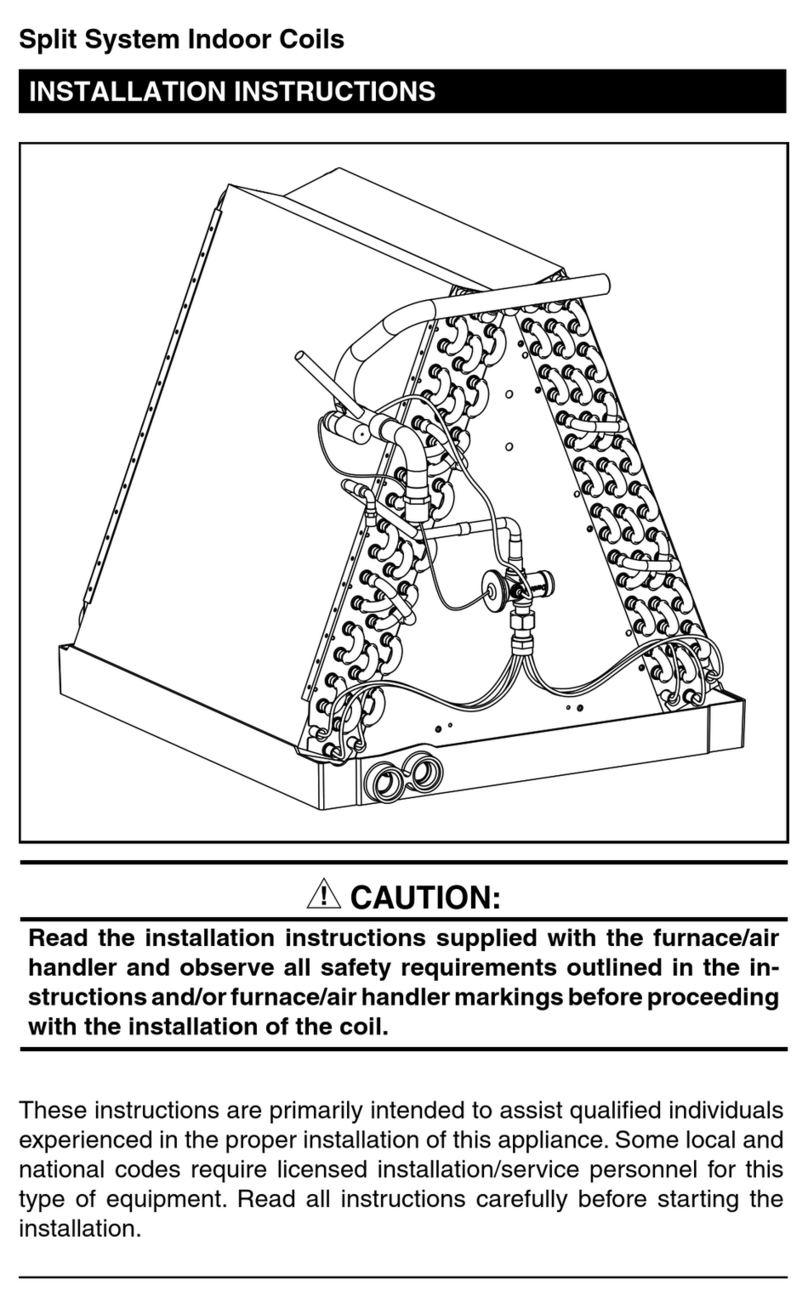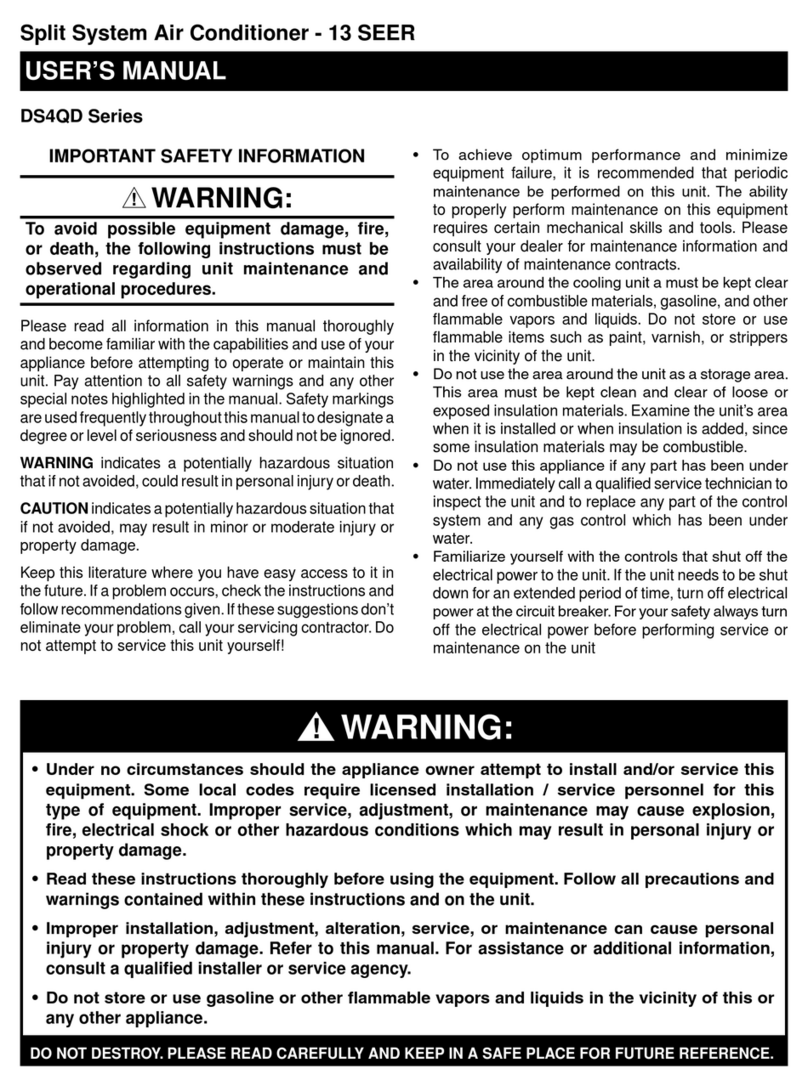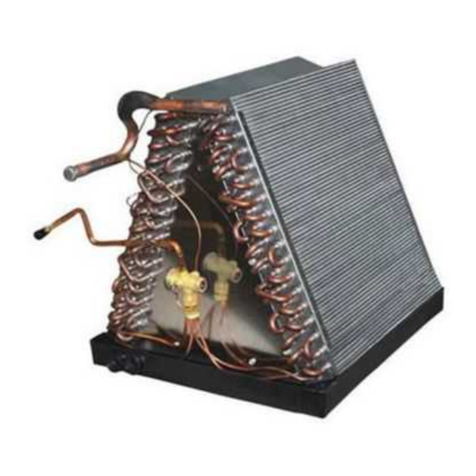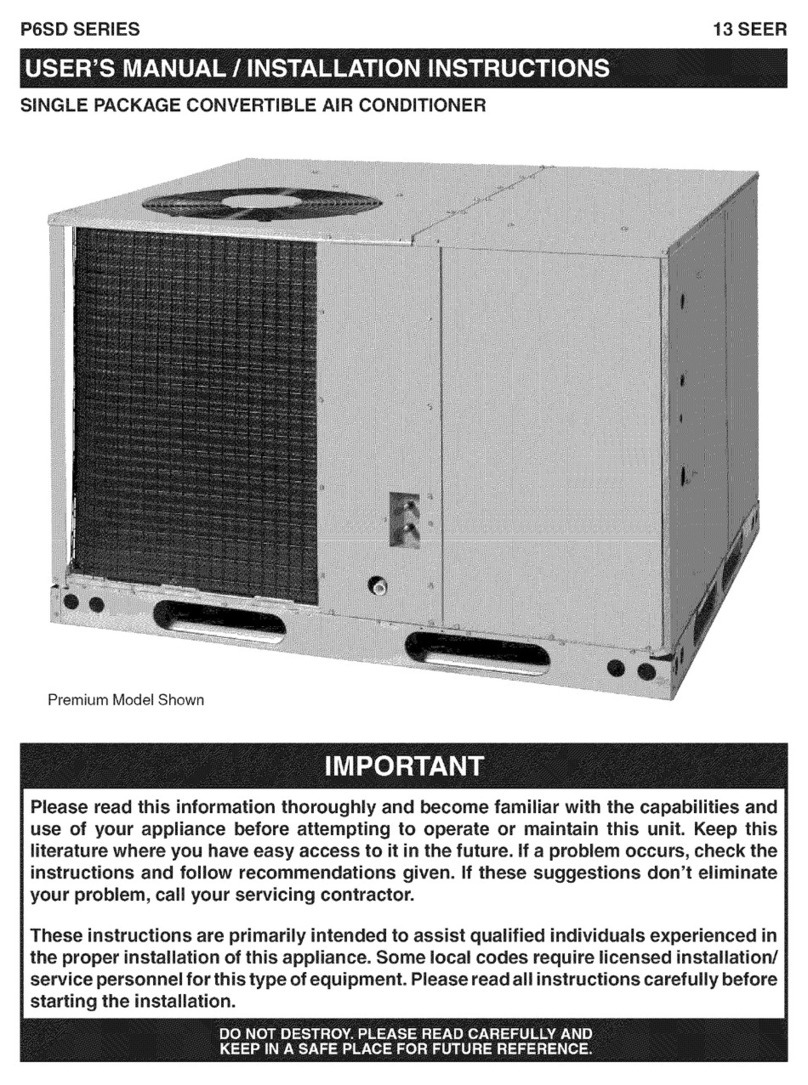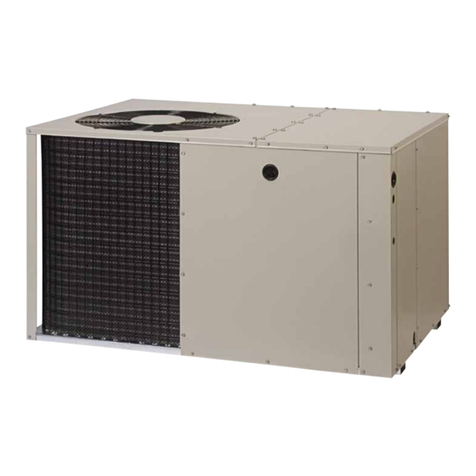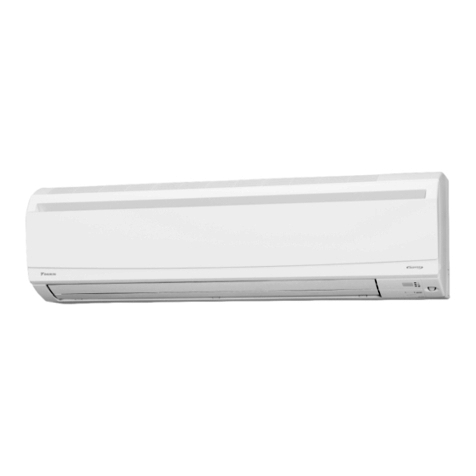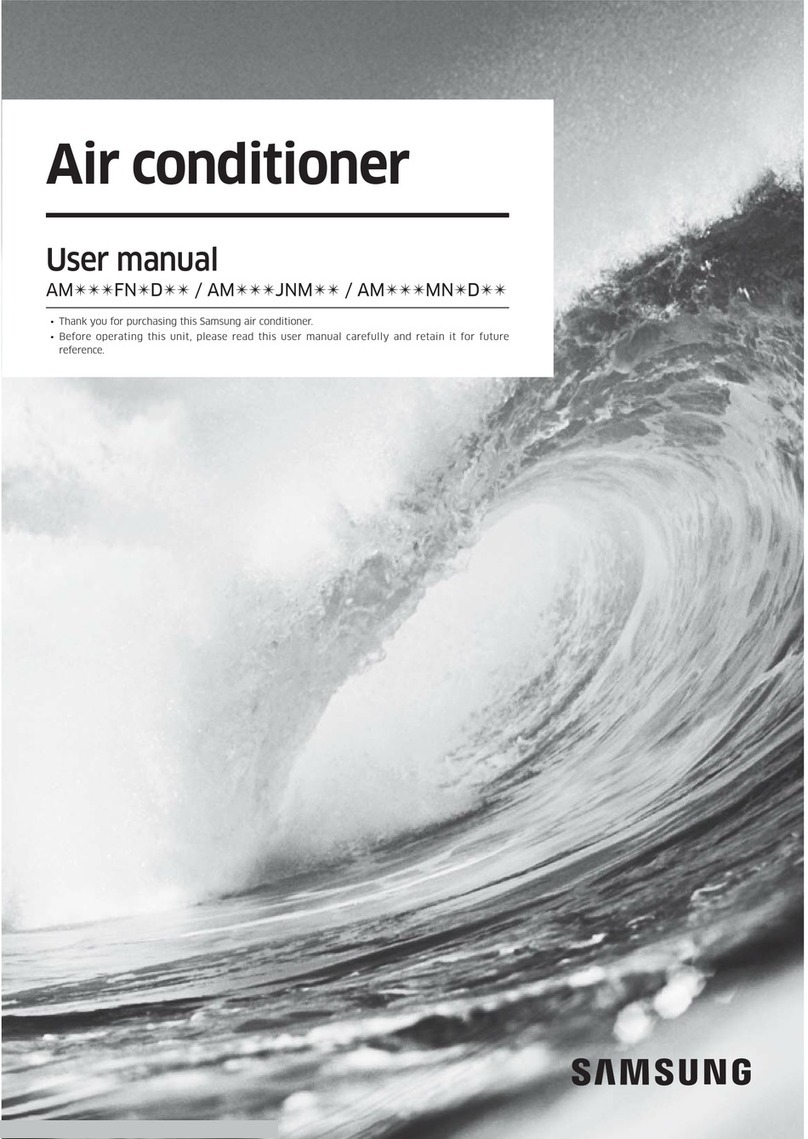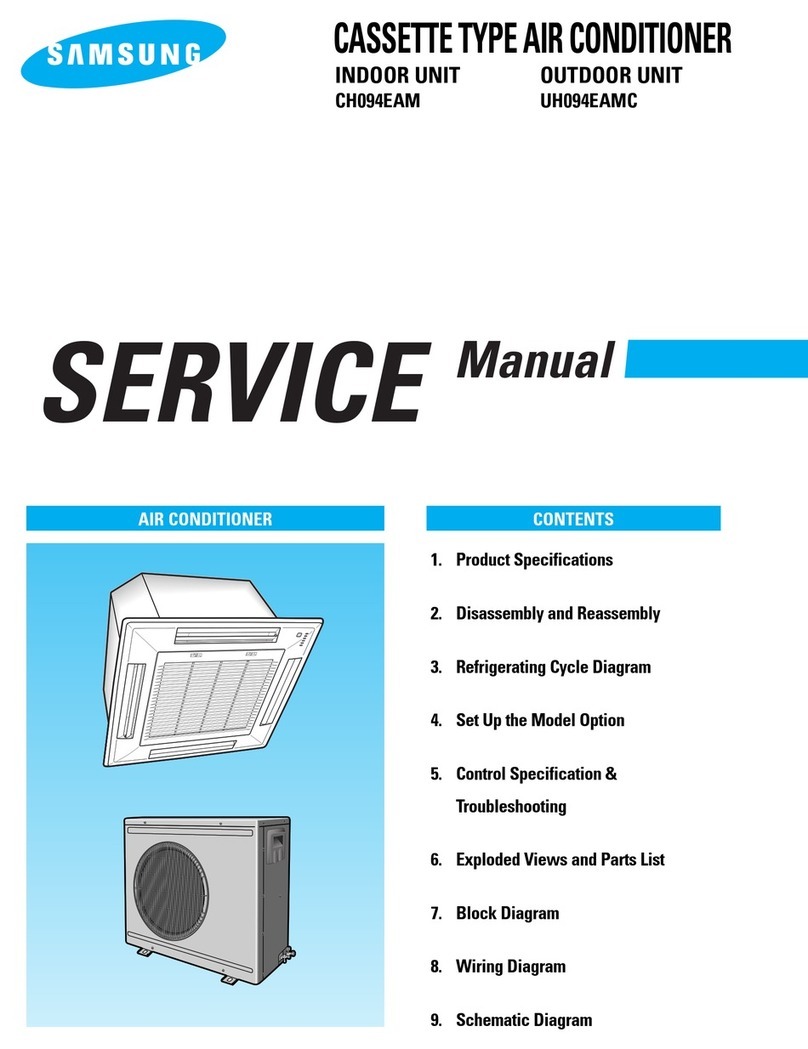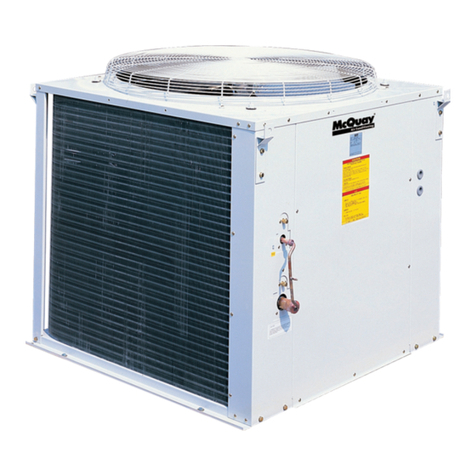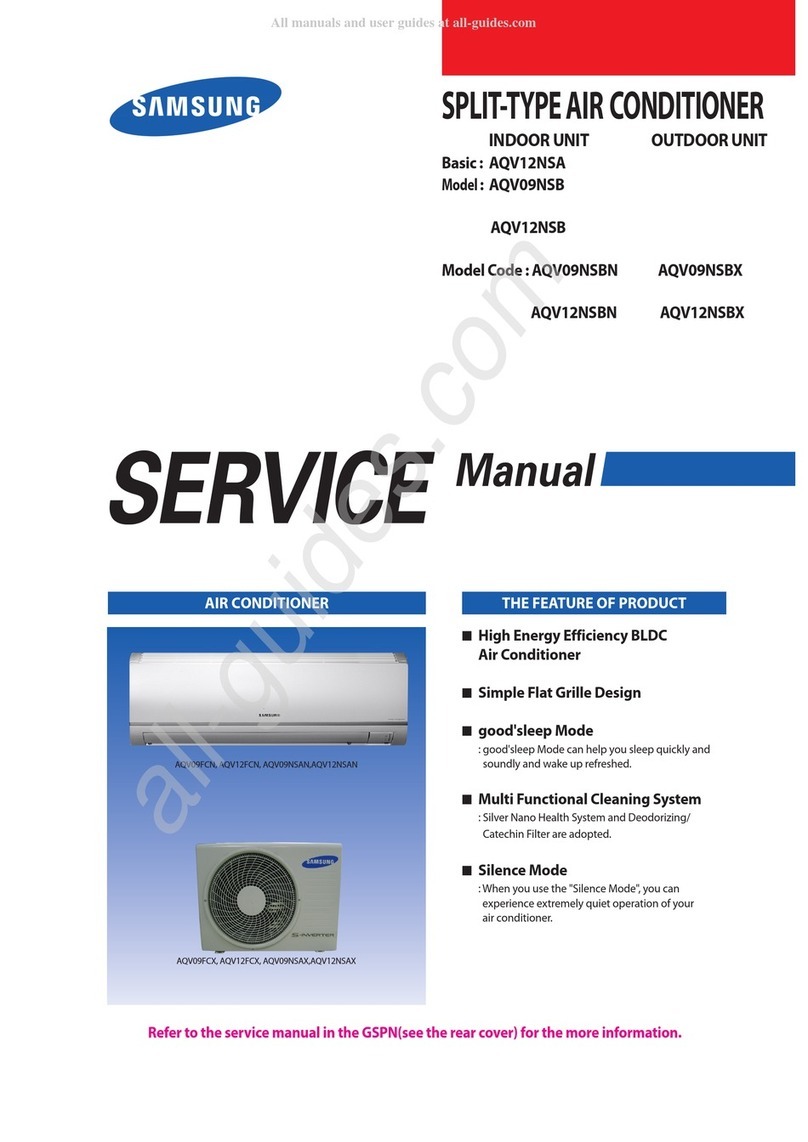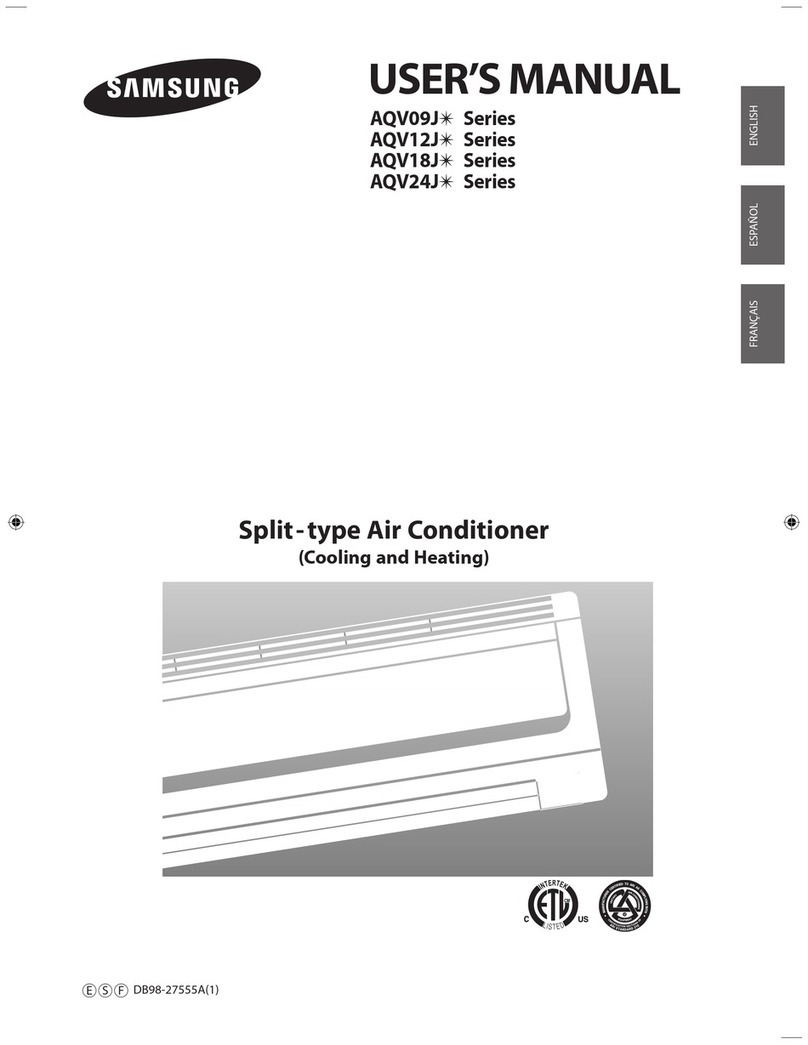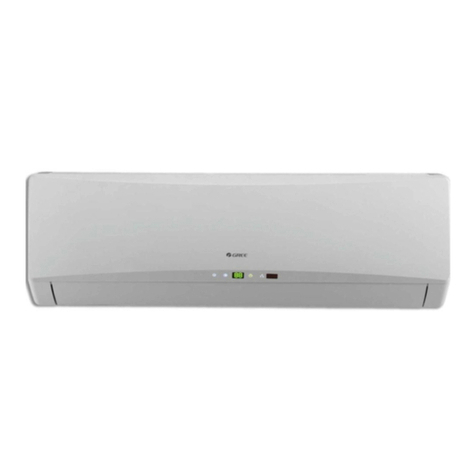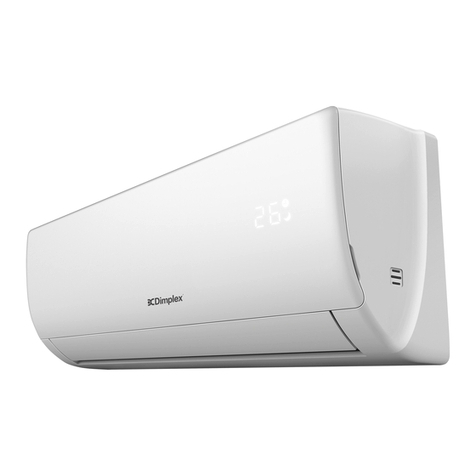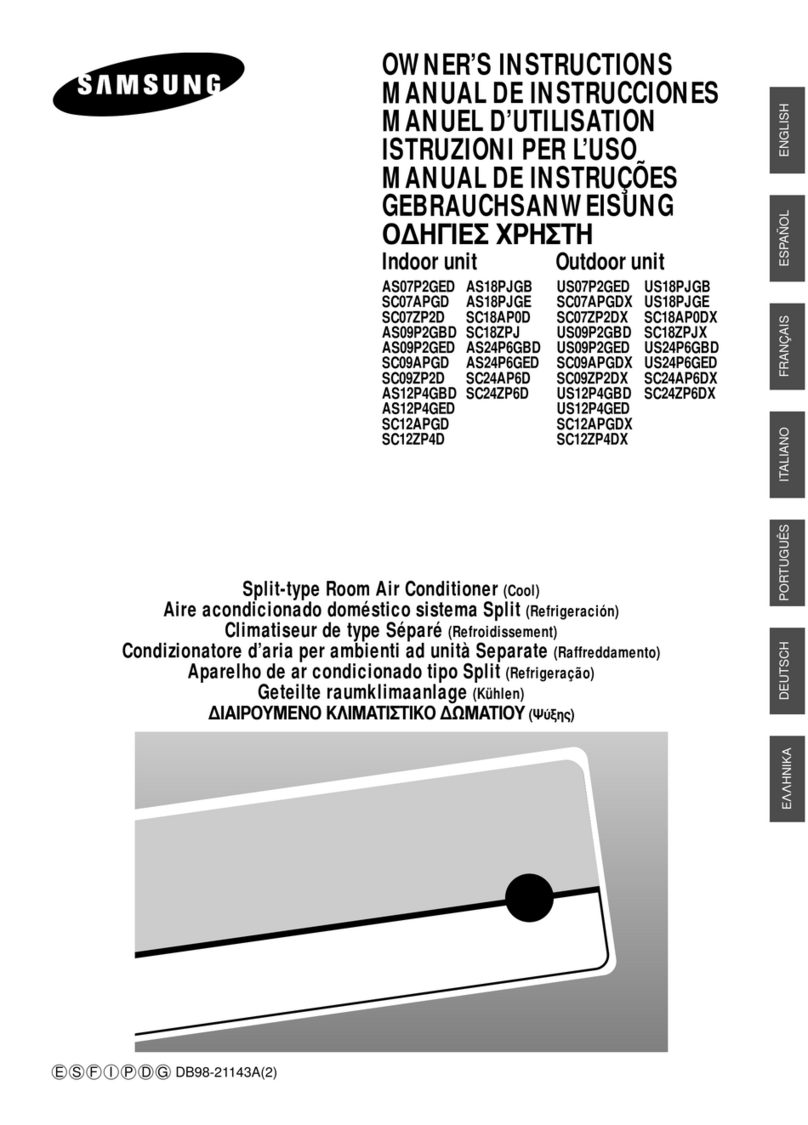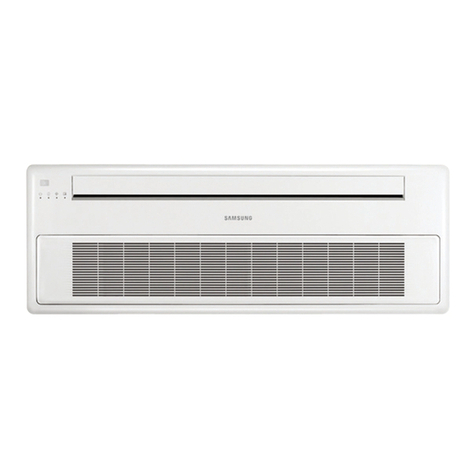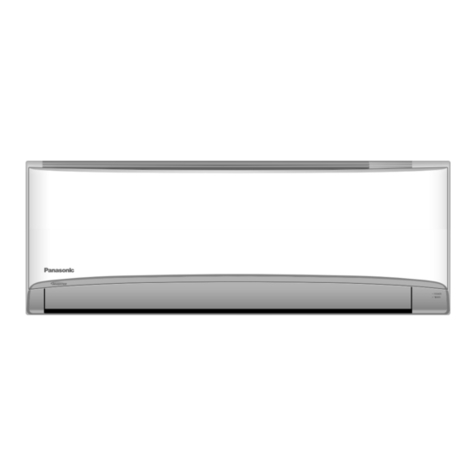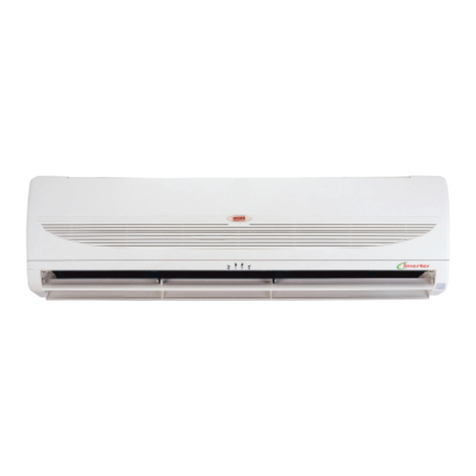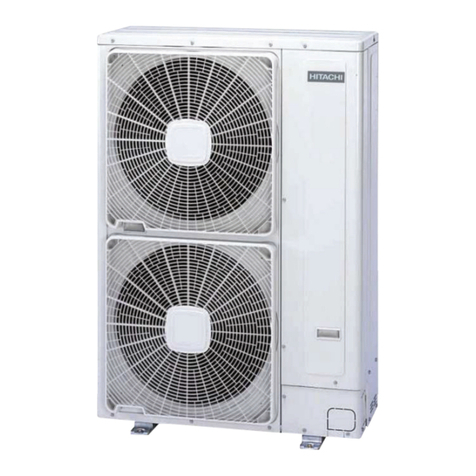
6
closes, there will be a 5 minute short cycling
delay before the outdoor unit will energize.
High-Pressure Switch—A High-pressure
switch is factory-installed and located in the
compressor discharge line internal to the out-
doorunit. Theswitchisdesignedtode-energize
the system when very high pressures occur
duringabnormal conditions. Undernormalcon-
ditions, the switch is closed. If the discharge
pressure rises above 575 psig, then the switch
willopen and de-energizethe outdoor unit. The
switchwill closeagain oncethe dischargepres-
sure decreases to 460 psig. Please note that
theswitchinterruptsthethermostatinputstothe
unit. Thus, when the switch opens and then
closes, there will be a 5 minute short cycling
delay before the outdoor unit will energize.
ShortCycleProtection—(SelectModels)With
the system operating in COOLING mode, note
the setpoint temperature setting of the thermo-
stat, and gradually raise the setpoint tempera-
ture until the outdoor unit and indoor blower de-
energize. Immediately lower the setpoint tem-
perature of the thermostat to its original setting
and verify that the indoor blower is energized
andthat the outdoor unitremainsde-energized.
Verify that, after approximately 5 minutes, the
outdoorunitenergizesandthatthetemperature
of the air supplied to the facility is cooler than
ambient temperature.
Cooling— Graduallylowerthethermostattem-
perature setpoint below the actual room tem-
perature and observe that the outdoor unit and
indoor blower energize. Feel the air being
circulated by the indoor blower and verify that it
is cooler than ambient temperature. Listen for
any unusual noises. If present, locate and
determinethesourceofthenoiseandcorrectas
necessary.
Heating — If provided with heating equipment,
lower the thermostat setpoint temperature to
the lowest obtainable setting and set the ther-
mostatfunctionswitchtoHEATING. Theindoor
blower and outdoor unit should stop running.
Increase the setpoint temperature of the ther-
mostat to the maximum setting. Verify that the
heating equipment has been energized (i.e.,
fossil fuel burner operating, etc.) and that the
indoor blower energizes after a short period of
time. Feel the air being circulated by the indoor
blower and verify that it is warmer than ambient
temperature. Listen for any unusual noises. If
present, locate and determine the source of the
noise and correct as necessary.
NOTE: Other sources for heating (i.e.: electric
furnace, fossil fuel furnace, air handler with
electricheat options,etc.)thatinterfacewith the
heat pump should be functionally checked to
verify system operation and compatibility with
the heat pump. Refer to the installation instruc-
tions for this equipment and perform a func-
tional checkout in accordance with the
manufacturer’s instructions.
Adjustment of Refrigerant Charge:
!CAUTION:
Splitsystemairconditionerequipment
containsliquidandgaseousrefrigerant
under pressure. Adjustment of
refrigerant charge should only be
attempted by qualified, trained
personnel thoroughly familiar with the
equipment. Under no circumstances
should the homeowner attempt to
install and/or service this equipment.
Failure to comply with this warning
could result in equipment damage,
personal injury, or death.
NOTE: The following Refrigerant Charging
Chartsare applicabletomatchedassembliesof
our equipment and at listed airflows for the
indoor coil. Assemblies of indoor coils and
outdoor units not listed are not recommended
and deviations from rated airflows or non-listed
equipment combinations may require modifica-
tions to the expansion device(s) and refrigerant
charging procedures for proper and efficient
system operation.
RefrigerantChargingChart—RefertoRefrig-
erantChargingChartsforcorrectsystemcharg-
ing, and to Orifice Usage Chart for correct
restrictor sizes.
Optional Equipment — A functional checkout
should be performed in accordance with the
checkout procedures supplied with the
equipment.












